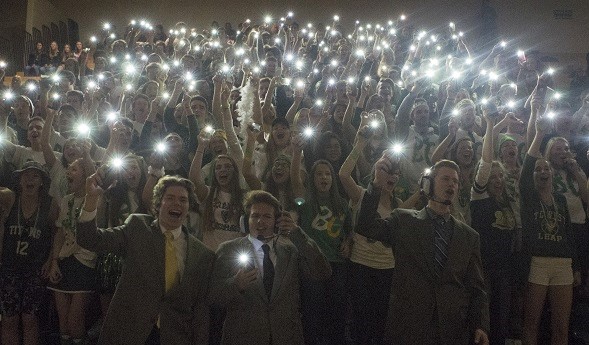
Post-Event Celebrations
March 16, 2012
In my last posting I praised the high school participant as the best behaved athlete on any level of sport. It’s ironic: based on what we see on higher levels, the older the athlete becomes, the more immature he or she is allowed to behave.
But we do have at least one conduct problem; and it’s one with potential for much bigger problems. It’s post-event celebrations.
Post-event celebrations have led to property damage, and they will lead to personal injuries unless we give the problem more careful attention and supervision.
Post-event celebrations are largely outside of the published playing rules, and they are usually beyond the jurisdiction of contest officials.
So, they will end up being the responsibility of game administration, and injuries will become the liability of game administrators.
This spring, the Representative Council may adopt more policies and procedures to which the MHSAA will direct more attention. The initial focus, as proposed, is on MHSAA team tournaments and to hold participating schools more explicitly accountable for property damage caused by celebrating teams and spectators.
Hopefully, attention to the broader topic and tougher policies for this narrow slice of the problem will reverse what we see as an unhealthy trend in school sports – excessive post-event celebrations.

BOTF VIII: We Challenge You to Cheer
December 17, 2018
By Geoff Kimmerly
Second Half editor
You go to all the games. You're cheering on your classmates the right way. You're having a blast with your friends. And you haven't seen a student section yet that can hang with you.
But are you ready for the statewide spotlight?
The MHSAA’s Student Advisory Council is ready to shine it on the top high school cheering section in Michigan with this winter's Battle of the Fans VIII.
Five schools have won at least one Battle of the Fans championship since the contest was created during the 2011-12 school year. Buchanan was named last year’s champion and presented with a banner during the MHSAA Boys Basketball Finals at Michigan State University’s Breslin Center. Sections from Boyne City and Petoskey also were finalists, with Cedar Springs, Charlotte, Munising, Negaunee, Pellston and Traverse City West’s sections making the semifinals.
This year's BOTF again will follow an expanded format created a year ago that allows for nine contenders to pursue the championship over multiple rounds of competition. Schools are invited to submit a short video, via YouTube, of their cheering sections in action at a school sporting event. Video submissions should be between 90 seconds and three minutes long and explain how that section meets the following contest criteria: positive sportsmanship, student body participation, school spirit, originality of cheers, organization of the group, student section leadership and fun.
The deadline for student-submitted video applications is noon Jan. 12. Nine semifinalists then will be chosen – three each from Class A, Class B and Class C/D – to partake in a two-week challenge where each will be required to complete 10 tasks further showing why it should be chosen as Michigan’s best student section. From those nine, three finalists then will be selected by the Student Advisory Council and visited on a home game night by MHSAA staff and Advisory Council representatives. The MHSAA will produce a video of that finalist after each visit, with the champion being selected by the Student Advisory Council based in part on support each section receives on the MHSAA’s social media sites.
This year’s Battle of the Fans VIII winner will be announced Feb. 22 and recognized March 15 at the Breslin Center.
“We’re excited to begin our second year of Battle of the Fans with this expanded format that allows us to keep more schools participating longer – and see them participating in various challenges instead of just during one visit like in the first years of the contest,” said Andy Frushour, MHSAA director of brand management and advisor to the Student Advisory Council. “Adding the challenge round last year created more excitement as more schools were competing later in the contest – and their work in those challenges provided us many more examples to share in showing students how much fun can be had cheering for their teams in a positive way.”
Rules, directions for submitting videos, plus links to coverage of finalists from the first seven years of the contest can be found on the MHSAA Website. This year’s finalist videos, plus the announcement of the 2018-19 winner, will be published on Second Half.
The Student Advisory Council is made up of eight seniors and eight juniors who each serve two-year terms. The Council acts as the voice of Michigan's student-athletes; it serves as a student sounding board for the MHSAA's Representative Council, assists in planning Sportsmanship Summits, Captains Clinics and other student leadership events; participates in a yearly focus group about the state of high school sports for Michigan State University's Institute for the Study of Youth Sports and assists with medal ceremonies at MHSAA championship events.
PHOTO: Traverse City West shined plenty of bright lights when we visited as part of the 2017 BOTF finalists tour. VIDEOS: Below, check out the videos from our visits to all of the first seven BOTF champions.

